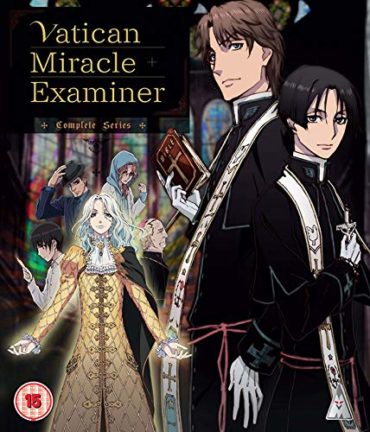Vatican Miracle Examiner Review
Two young priests, Father Josef Kou Hiraga (the scientist) and Father Roberto Nicholas (the archivist/cryptographer) are members of the Assembly of Saints, a special unit established in the Vatican to travel the world investigating the authenticity of reported miracles. So when their boss Archbishop Saul receives reports of an imminent virgin birth at the Abbey of San Rosario in Mexico, he send the two to discover whether it’s authentic – or not. Arriving at the San Rosario, the two find that they’ve become drawn into a highly unwholesome situation: one of the boys at the school exhibits stigmata and is seen levitating in chapel, one of the nuns has indeed become pregnant and the statue of the Virgin Mary is seen to shed tears. A series of grisly murders ensues, with one member of the religious community after another succumbing to increasingly horrible deaths, and even the students at the school seem to be obsessed with the supernatural, making use of ouija boards. But as the two Vatican priests begin to uncover an elaborate conspiracy with its origins in the outcome of World War II, it becomes increasingly difficult to take any of the weirdness seriously.
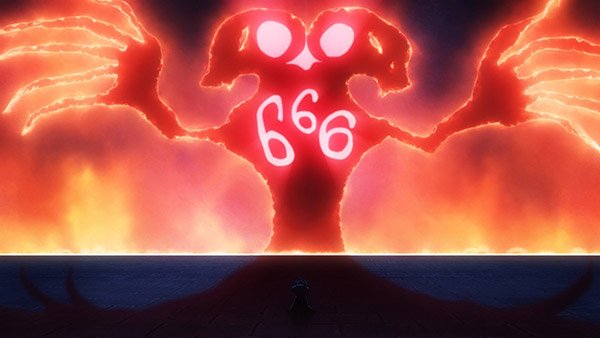
The next investigation takes the two examiners to Africa where a dead priest’s prophetic pronouncements seem to be coming true and – as if to confirm his miraculous status – his body appears to be incorruptible. An angelically beautiful priest called Father Julia Michael Borge has medical skills that make a big impression on Hiraga – but is there a more sinister side to Father Julia?
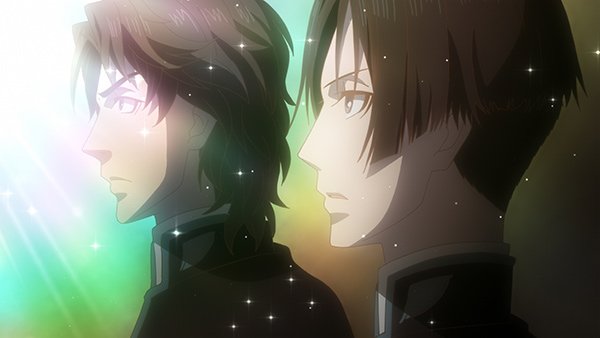
The third investigation is in Tuscany where a sinister scythe-wielding clown strikes fear into the local inhabitants and a miraculous statue of the crucified Christ is seen to be glowing. Along the way Hiraga and Roberto encounter – more than once – FBI agent Bill Saskins. And the two miracle investigators have their own shadows hanging over them. Hiraga’s younger brother Ryota is suffering from an incurable illness and it emerges later on that Roberto is haunted by a very dark family history. By Episode 12 (which focuses on the ailing Ryota) several of the disparate plot-strands begin to come together to deliver some kind of a resolution while only leaving more questions to be answered.

Let’s face it, Vatican Miracle Examiner is what my dad would have called ‘a load of old hokum’ with a mischievous grin. All the gorgeous shots of the Vatican in glowing church-window hues, laced with Christian imagery: stone angels, rosaries, crosses, yet more crosses… are merely window dressing for some utterly preposterous plots in the style of Dan Brown (or for much older readers, Dennis Wheatley). And there are, of course, no miracles, only conspiracies – and then some! Nevertheless, by the end of the series I began to almost feel rather fond of our two intrepid (and decidedly pretty) Vatican Miracle Examiners, Fathers Roberto and Hiraga and their chaste, brotherly affection for each other, their sharing meals of home-cooked pasta, wearing fetching aprons to protect their soutanes.

The light novels (sixteen so far!) by Rin Fujiki on which this series is based are not available in English, so it’s a little difficult to tell if the unsubtle way in which the mysteries are revealed and investigated is the fault of the novelist – or the anime scriptwriters. Having checked the novels out, it looks as if the novelist is going for the ‘set each mystery in a different country and use their mythology/history’ shtick: Egypt; Norway; Great Britain; even Japan! All three main story arcs in the anime use the ‘one revelation after another’ method of story-telling which leaves the viewer feeling cheated or even duped. A successful mystery reveals almost all the details the reader/viewer needs to know so that they’re on the edge of their seat, wondering which of the carefully planted clues is the right one. Vatican Miracle Examiner doesn’t understand how this works and suffers as a consequence. When you’re delivering a story full of hard-to-believe occurrences, it doesn’t really suspend the viewer’s disbelief if you keep flinging more and yet more outrageous revelations at them. Virgin Birth! Levitating school students! Runes! Nazis! Hitler! Enough already!
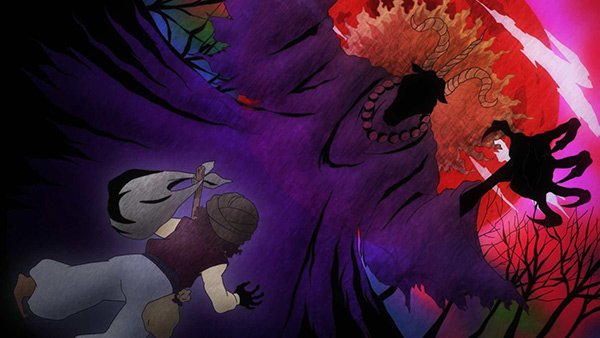
A little bonus is the OVA ‘The Witch’s Soup’ (Episode 13) which is amusing, ingenious and even rather charming. If only the series could have adopted this lighter tone throughout…
This set from MVM comes in the Japanese version (no dub) with pleasantly easy-to-read yellow subtitles. The Blu-rays show off the series’s glowing colour palette at its best, the sound is good and the menu is easily navigable. There are no extras except for textless Opening and Ending songs. One feature that lifts this series is the voice acting, especially that of the two experienced seiyuu playing the leads: Junichi Suwabe (Archer in Fate/Stay night, Dandy in Space Dandy) as Father Roberto and Nobuhiko Okamoto (Bakugo in MHA, Rin in Blue Exorcist) as Father Joseph (Hiraga). And the show’s characters look good, thanks to THORES Shibamato (Trinity Blood) who created the striking original character designs and is the illustrator for the novels.
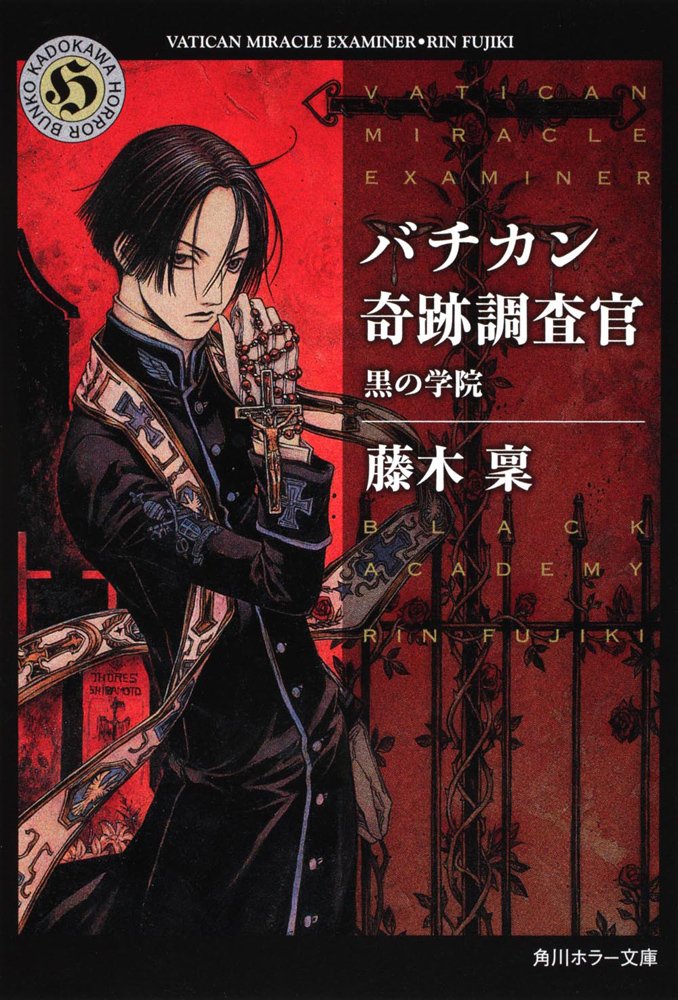
The Opening Theme:”Mysterium” by SCREEN mode is disappointingly predictable although the montage of Roman Catholic imagery is pretty. The Ending Theme: “Gankō Signal” (Vision Signal) is sung by Nobuhiko Okamoto, the VA for Hiraga. However the original soundtrack is by Yoshiaki Fujisawa, who has an impressive backlist (A Place Further Than the Universe, Revue Starlight, Land of the Lustrous) and is as OTT as one would hope for in as melodramatic a show as this. Particularly effective are Fujisawa’s use of a sinister deep, grinding string motif (diabolus in musica!) and choral passages (strongly and aptly influenced by Allegri’s Miserere) employing piercingly high treble voices.

But do these disparate parts add up to anything in the end? Well, not really. So bad it’s good? There are a few laugh out-loud moments when the preposterousness of the plotting will cause viewer meltdown – which is not the reaction, one suspects, that the creative team were aiming for. But that OVA is interesting because it contains the seeds of the show this might have been, had the novelist and the anime team not been so determined to throw everything and then some into their creative cauldron.


